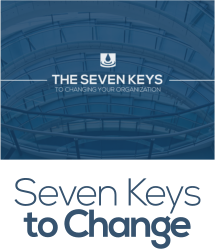In 2001, the World Trade Center was attacked and as a result, over 3,000 people died. The event also cratered a major area within Lower Manhattan. casestudyfeatFollowing the attack, one of the major tasks was to determine how to rebuild the 16 acres that had been devastated. The governor appointed the Lower Manhattan Development Corporation (LMDC) to oversee all decision making about the rebuilding effort. Given the tremendous emotion that this engendered, LMDC wanted to be extremely sensitive, as it made its decisions, to the feelings and perspectives of the entire region that was so directly impacted. Therefore they hired a firm of which Daniel Stone was a key member, to guide a process to engage the larger citizenship in helping make its decisions.
Daniel Stone was the lead designer and producer of an event that came to be called “Listening to the City” that directly engaged 4,500 people in reviewing and informing the decision. This event, held on July 22, 2002, was conducted in the Javits Convention Center in Manhattan. The participants had been recruited to ensure a demographically representative body that reflected the community of New York City, New Jersey, and Connecticut, and in particular the survivors and families of victims.
The process of designing this event was extensive and complex; it involved working with an advisory team of approximately forty people representing a wide range of organizations and constituencies. It also required resolving competing interests between those who were primarily focused on building development and those who were focused on addressing the human and social needs of those who were affected. Daniel and his partner worked extensively, doing a form of shuttle diplomacy at times, to build a design for the event that would satisfy even the most critical observers.
The event involved engaging every single person at round tables with trained facilitators in reviewing the LMDC’s six options for rebuilding the site. This was assisted through up-front presentations on the different options by experts as well as written materials for which Daniel guided the development. As the table groups reviewed the options, they entered their ideas into a groupware computer system at each table and these were synthesized by a group called a theme team that identified the major messages. Following the table group discussion, these overall messages were fed back to the overall group using large screens. And then each participant was asked to register their support for each of the options using wireless handheld polling keypads.
The result was that participants roundly rejected all six options; but they also provided clear guidance about what concerned them. After the voting, the head of LMDC stood up in front of the group and announced that they had heard clearly the message; in response they would take all six options off the table and re-start the process of planning, adopting the criteria that the overall group had recommended.
In fact, that is what happened; the entire planning process was re-initiated with a global design competition. That competition resulted in the selection of the architect, whose design has now been completed on the site.
This was seen as one of the most successful and impactful events to engage a large group of citizens in a major decision. There were over 200 news outlets from around the world in the room, reporting on the event; and a photo of the event was on the front page of the NY Times the next day.
This is an example of a high engagement strategy that is productive, focused, efficient, and impactful. It is also a process that Daniel has adapted for use in organizational change efforts in a wide variety of circumstances including within large organizations such as Cargill, NYU Medical Center, Ohio State University, and others.






